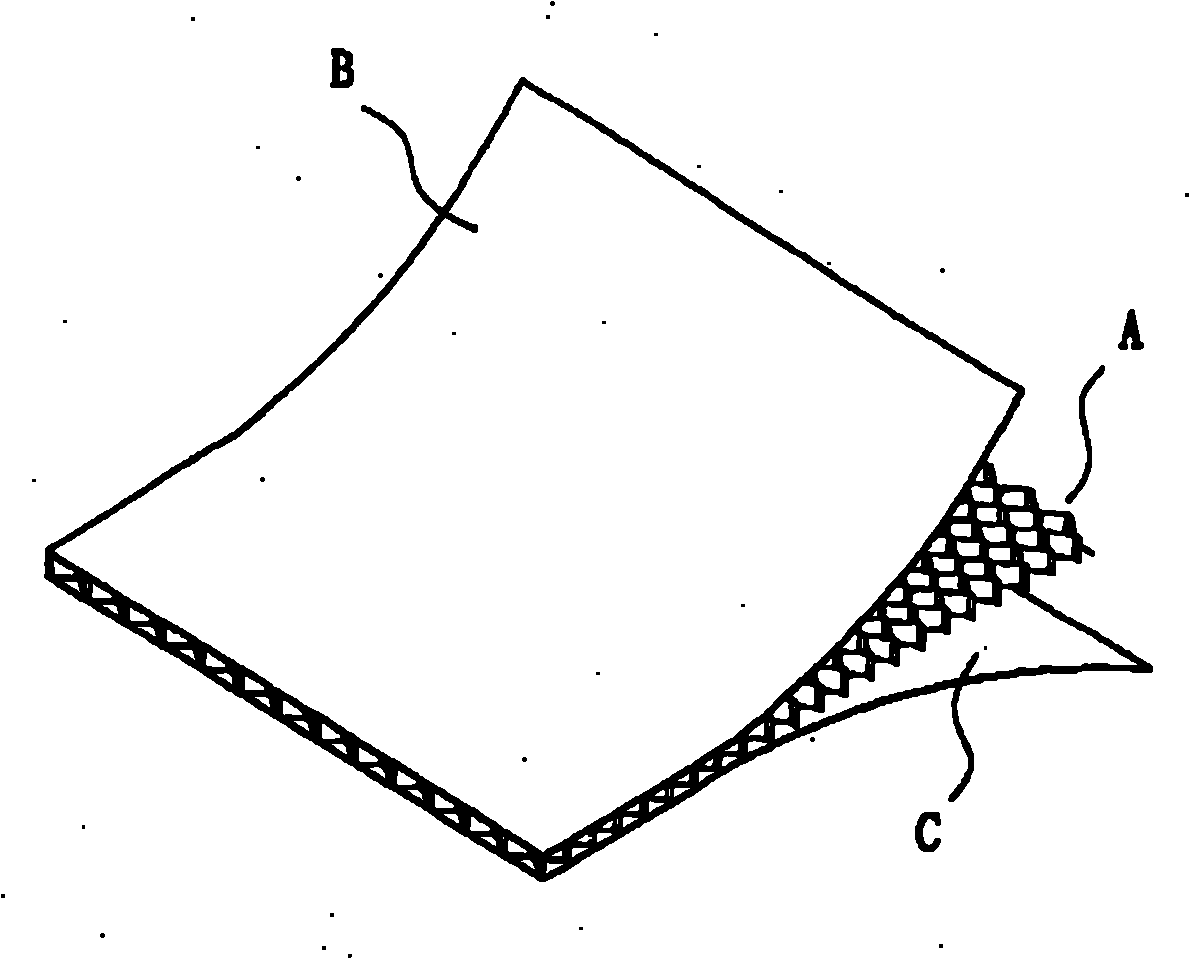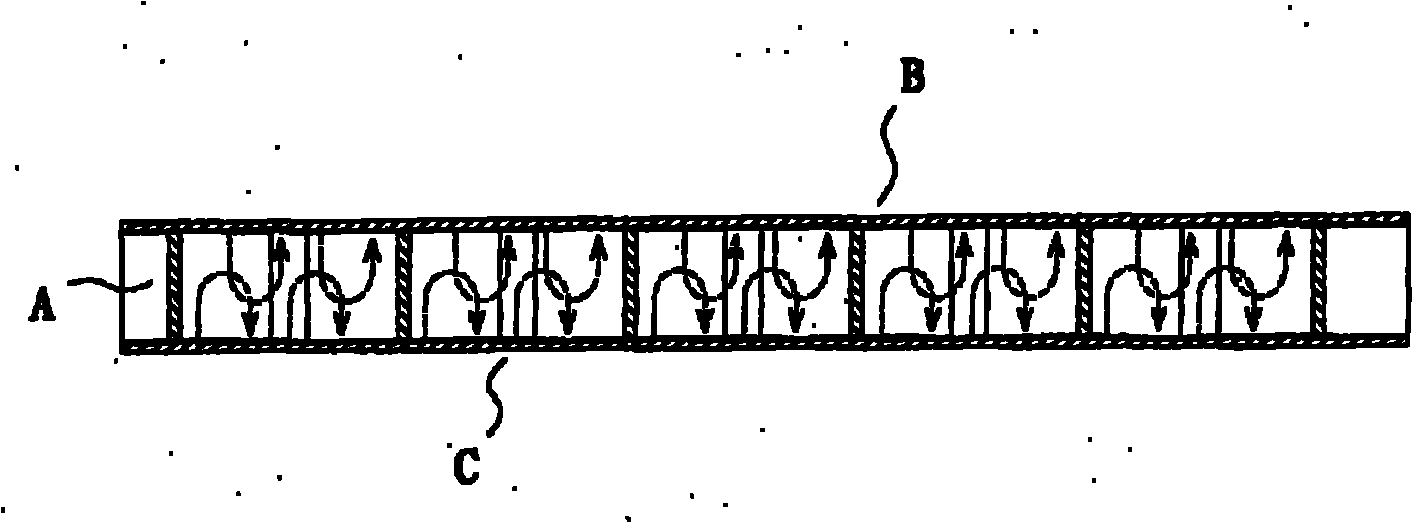Method for manufacturing pressure-resistant plate
A manufacturing method and technology of pressure-resistant plates, applied in chemical instruments and methods, lamination, sheet/board, etc., can solve the problems of not being hard and solid enough, unable to discharge, and low production efficiency
- Summary
- Abstract
- Description
- Claims
- Application Information
AI Technical Summary
Problems solved by technology
Method used
Image
Examples
Embodiment Construction
[0021] see image 3 , according to an embodiment of the inventive concept, there are the following steps, specifically:
[0022] Substrate cutting
[0023] Cut a roll of recycled paper substrate 1a into a predetermined number of small-area substrates 1b of appropriate size and size by a paper cutter a in sequence as required, and then use a paper feeder b to cut each small area. The substrates 1b are sent to the gluing machine c one by one for gluing operation. After gluing, the front and rear sheets are laminated and bonded to each other in sequence. The parts to be pasted are completely different, that is, after the small-area substrate 1b is pasted, different pasting parts will appear in the order of odd-numbered sheets and even-numbered sheets.
[0024] Small unit withstand voltage single formation
[0025] According to the required design height of the pressure-resistant body, the small-area base material 1b that has been bonded as a whole is subdivided into a predeter...
PUM
 Login to View More
Login to View More Abstract
Description
Claims
Application Information
 Login to View More
Login to View More - R&D
- Intellectual Property
- Life Sciences
- Materials
- Tech Scout
- Unparalleled Data Quality
- Higher Quality Content
- 60% Fewer Hallucinations
Browse by: Latest US Patents, China's latest patents, Technical Efficacy Thesaurus, Application Domain, Technology Topic, Popular Technical Reports.
© 2025 PatSnap. All rights reserved.Legal|Privacy policy|Modern Slavery Act Transparency Statement|Sitemap|About US| Contact US: help@patsnap.com



